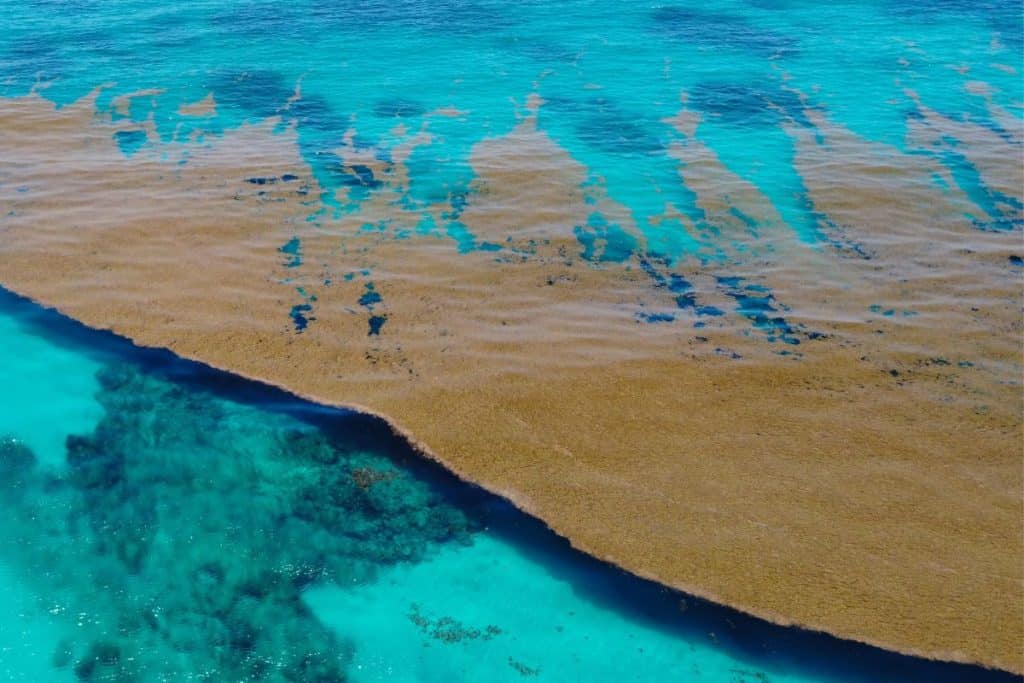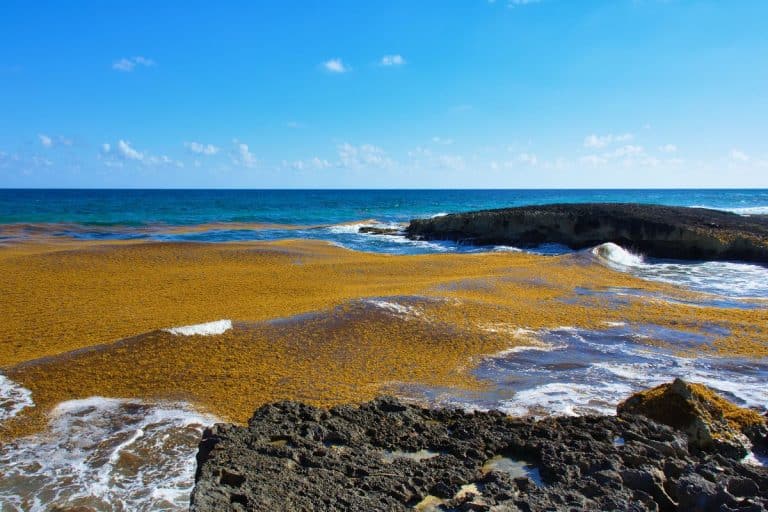Scientists have been sharing the implications of the massive 5,000-mile-long belt of seaweed over the past few months. The massive blob is making its way to Florida, the Caribbean and Mexico, due to strong currents pushing the blob from the Sargasso Sea westward.
The mass, which reached an estimated 13 million tons according to some studies, has shrank according to researchers. It reached record size in March but since then, it has shrunk by 15% between April and May.
Stretching from the western coast of Africa into the Gulf of Mexico, the seaweed found in the Great Atlantic Sargassum Belt (GASB) has been garnering news over the past couple of months.
The researchers that monitor sargassum’s growth and movement stated that this massive decrease is unprecedented. Since the first year of tracking the GASB, this significant decrease has never been seen.
While sargassum quantities went up in the western Atlantic and the Gulf, their report showed that most of the reduction happened quite far from U.S. shores.

In June, sargassum in the Gulf of Mexico will start to decrease, which would alleviate the stress on the Florida Keys and the east coast of Florida. According to researchers who track the GASB, the yearly sargassum blob decreases each year later in the summer.
The rotting, stinking algae is composed of gas-filled structures which keep the brown seaweed buoyant and making its way to all Caribbean islands, the Gulf of Mexico and Southeast Florida. When washing ashore, not only does it stink, but it is not advised to swim next to it as it can cause the skin to turn red and into an itchy rash.
While it is harmful to humans, the seaweed helps with shoreline stability and is home for many marine species and the algae helps with erosion and provides beach plants with nutrients.

